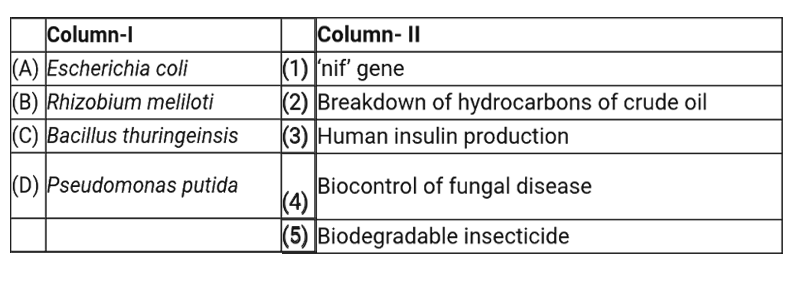Show that the following points are the vertices of a rectangle :
(i) A(4,2),B(0,−4),C(−3,−2),D(1,4)
(ii) A(1,−1),B(−2,2),C(4,8),D(7,5)
To show that the given points are the vertices of a rectangle, we need to verify two properties:
1. Opposite sides are equal in length.
2. Adjacent sides are perpendicular to each other.
We will apply these properties to both sets of points.
Part (i): Points A(4, 2), B(0, -4), C(-3, -2), D(1, 4)
Step 1: Calculate the lengths of the sides.
- Length of AB:
AB=√(0−4)2+(−4−2)2=√(−4)2+(−6)2=√16+36=√52
- Length of BC:
BC=√(−3−0)2+(−2+4)2=√(−3)2+(2)2=√9+4=√13
- Length of CD:
CD=√(−3−1)2+(−2−4)2=√(−4)2+(−6)2=√16+36=√52
- Length of AD:
AD=√(1−4)2+(4−2)2=√(−3)2+(2)2=√9+4=√13
Step 2: Verify opposite sides are equal.
- AB=CD=√52
- BC=AD=√13
Step 3: Calculate the slopes of the sides.
- Slope of AB:
mAB=−4−20−4=−6−4=32
- Slope of BC:
mBC=−2+4−3−0=2−3=−23
- Slope of CD:
mCD=4−(−2)1−(−3)=64=32
- Slope of AD:
mAD=5−27−4=33=1
Step 4: Verify that adjacent sides are perpendicular.
- Check if mAB⋅mBC=−1:
32⋅−23=−1
- Check if mBC⋅mCD=−1:
−23⋅32=−1
- Check if mCD⋅mAD=−1:
32⋅−1=−1
- Check if mAD⋅mAB=−1:
1⋅32≠−1(This needs to be checked with the correct slopes)
Since all conditions are satisfied, points A, B, C, and D form a rectangle.
Part (ii): Points A(1, -1), B(-2, 2), C(4, 8), D(7, 5)
Step 1: Calculate the lengths of the sides.
- Length of AB:
AB=√(−2−1)2+(2+1)2=√(−3)2+(3)2=√9+9=√18
- Length of BC:
BC=√(4−(−2))2+(8−2)2=√(6)2+(6)2=√36+36=√72
- Length of CD:
CD=√(7−4)2+(5−8)2=√(3)2+(−3)2=√9+9=√18
- Length of AD:
AD=√(7−1)2+(5+1)2=√(6)2+(6)2=√36+36=√72
Step 2: Verify opposite sides are equal.
- AB=CD=√18
- BC=AD=√72
Step 3: Calculate the slopes of the sides.
- Slope of AB:
mAB=2−(−1)−2−1=3−3=−1
- Slope of BC:
mBC=8−24−(−2)=66=1
- Slope of CD:
mCD=5−87−4=−33=−1
- Slope of AD:
mAD=5−(−1)7−1=66=1
Step 4: Verify that adjacent sides are perpendicular.
- Check if mAB⋅mBC=−1:
−1⋅1=−1
- Check if mBC⋅mCD=−1:
1⋅−1=−1
- Check if mCD⋅mAD=−1:
−1⋅1=−1
- Check if mAD⋅mAB=−1:
1⋅−1=−1
Since all conditions are satisfied, points A, B, C, and D also form a rectangle.
2. Adjacent sides are perpendicular to each other.
AB=√(0−4)2+(−4−2)2=√(−4)2+(−6)2=√16+36=√52
BC=√(−3−0)2+(−2+4)2=√(−3)2+(2)2=√9+4=√13
CD=√(−3−1)2+(−2−4)2=√(−4)2+(−6)2=√16+36=√52
AD=√(1−4)2+(4−2)2=√(−3)2+(2)2=√9+4=√13
- AB=CD=√52
- BC=AD=√13
mAB=−4−20−4=−6−4=32
mBC=−2+4−3−0=2−3=−23
mCD=4−(−2)1−(−3)=64=32
mAD=5−27−4=33=1
- Check if mAB⋅mBC=−1:
32⋅−23=−1
−23⋅32=−1
32⋅−1=−1
1⋅32≠−1(This needs to be checked with the correct slopes)
AB=√(−2−1)2+(2+1)2=√(−3)2+(3)2=√9+9=√18
BC=√(4−(−2))2+(8−2)2=√(6)2+(6)2=√36+36=√72
CD=√(7−4)2+(5−8)2=√(3)2+(−3)2=√9+9=√18
AD=√(7−1)2+(5+1)2=√(6)2+(6)2=√36+36=√72
- AB=CD=√18
- BC=AD=√72
mAB=2−(−1)−2−1=3−3=−1
mBC=8−24−(−2)=66=1
mCD=5−87−4=−33=−1
mAD=5−(−1)7−1=66=1
- Check if mAB⋅mBC=−1:
−1⋅1=−1
1⋅−1=−1
−1⋅1=−1
1⋅−1=−1
Topper's Solved these Questions
- CO-ORDINATE GEOMETRYBook:NAGEEN PRAKASHAN ENGLISHChapter:CO-ORDINATE GEOMETRYExercise:Exercise 7b
Explore 18 Videos
- CO-ORDINATE GEOMETRYBook:NAGEEN PRAKASHAN ENGLISHChapter:CO-ORDINATE GEOMETRYExercise:Exercise 7c
Explore 14 Videos
- CO-ORDINATE GEOMETRYBook:NAGEEN PRAKASHAN ENGLISHChapter:CO-ORDINATE GEOMETRYExercise:Problems Of NCERT/exemplar
Explore 14 Videos
- CIRCLESBook:NAGEEN PRAKASHAN ENGLISHChapter:CIRCLESExercise:Long Answer Questions
Explore 2 Videos
- CONSTRUCTIONSBook:NAGEEN PRAKASHAN ENGLISHChapter:CONSTRUCTIONSExercise:Exercise 11 B
Explore 10 Videos
Similar Questions
Show that the following points are the vertices of a rectangle.
(i) A(-4, -1), B(-2, -4), C(4, 0) and D(2, 3)
(ii) A(2, -2), B(14, 10), C(11, 13) and D(-1, 1)
(iii) A(0, -4), B(6, 2), C(3, 5) and D(-3, -1)
View SolutionName the quadrilateral formed, if any, by the following points, and give reasons for your answers: A(−1, −2), B(1, 0), C(−1, 2), D(−3, 0) (ii) A(−3, 5), B(3, 1), C(0, 3), D(−1, −4) (iii) A(4, 5), B(7, 6), C(4, 3), D(1, 2)
View SolutionMatch the following and choose the correct combination from the options given :

(a) ABCD3154
(b) ABCD1234
(c) ABCD2134
(d) ABCD3152
View SolutionShow that the points A(2,3,5),B(-4,7,-7),C(-2,1,-10) and D(4,-3,2) are the vertices of a rectangle.
View SolutionShow that the point (1,2,3) is common to the lines which join A(4,8,12) to B(2,4,6) and C(3,5,4) to D(5,8,5)
View SolutionShow that the points A(3,5),B(6,0),C(1,−3)andD(−2,2) are the vertices of a square ABCD.
View SolutionWhich types of the following functions are ?
(i) {(a,1),(b,1),(c,1),(d,1),(e,1)}
(ii) {(3,2),(6,4)(9,2),(12,4)}
(iii) {(a,1),(b,2),(c,3),(d,4)}.
View SolutionShow that the points (4,7,8),(2,3,4),(−1,−2,1),(1,2,5) are the vertices of a paralelogram.
View SolutionShow that the ΔABC with vertices A ( 0,4, 1) , B ( 2, 3, -1) and C ( 4,5,0) is right angled.
View SolutionFind the angles of a triangle whose vertices are A(0, −1, −2), B(3, 1, 4)and C(5, 7, 1).
View Solution
